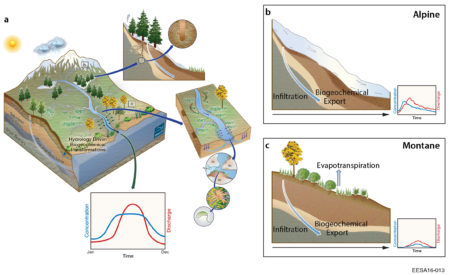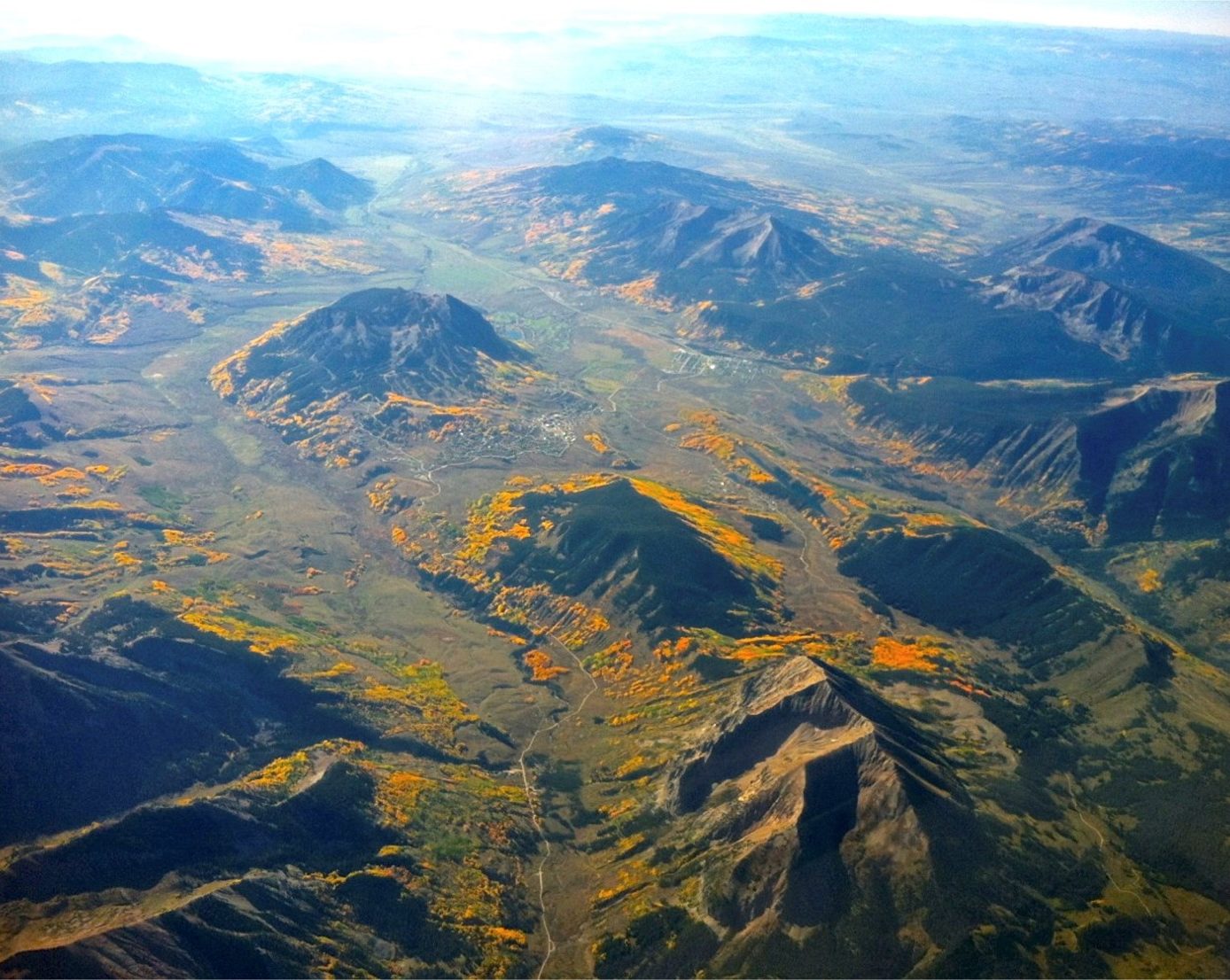Watershed Function Scientific Focus Area
Biogeochemical Dynamics from Genome to Watershed Scales
Climate change, extreme weather, land-use change, and other perturbations are significantly reshaping interactions among the vegetation, soil, fluvial, and subsurface compartments of watersheds throughout the world. Watersheds are recognized as Earth’s key functional unit for managing water resources, but their hydrological interactions also mediate biogeochemical processes that support all terrestrial life. These complex interactions, which occur within a heterogeneous landscape can lead to a cascade of effects on downstream water availability, nutrient and metal loading, and carbon cycling. Despite significant implications for energy production, agriculture, water quality, and other societal benefits important to U.S. Department of Energy (DOE) energy and environmental missions, uncertainty associated with predicting watershed function and dynamics remains high.
To address this uncertainty, the Watershed Function Scientific Focus Area (SFA) is developing a predictive understanding of how mountainous watersheds retain and release water, nutrients, carbon, and metals. In particular, the SFA is developing understanding and tools to measure and predict how droughts, early snowmelt, and other perturbations impact downstream water availability and biogeochemical cycling at episodic to decadal timescales.
 System-of-Systems Watershed View. The Watershed Function SFA takes a “system-of-systems” perspective and utilizes a scale-adaptive simulation approach to quantify how fine-scale processes occurring in different watershed subsystems contribute to the integrated, time-dependent export of water, nitrogen, carbon, and metals. (a) Key watershed subsystems (e.g., hillslopes, floodplains, and meadows) serve as testbeds to quantify interactions among vegetation, biogeochemistry, and hydrogeology in response to hydrological perturbations associated with that subsystem. The scale-adaptive approach simulates the aggregated watershed response. (b, c) Alpine and montane subsystems may respond very differently to earlier snowmelt, based on plant readiness to utilize available water, leading to different downgradient contributions of water, nutrients, carbon, and other elements.
System-of-Systems Watershed View. The Watershed Function SFA takes a “system-of-systems” perspective and utilizes a scale-adaptive simulation approach to quantify how fine-scale processes occurring in different watershed subsystems contribute to the integrated, time-dependent export of water, nitrogen, carbon, and metals. (a) Key watershed subsystems (e.g., hillslopes, floodplains, and meadows) serve as testbeds to quantify interactions among vegetation, biogeochemistry, and hydrogeology in response to hydrological perturbations associated with that subsystem. The scale-adaptive approach simulates the aggregated watershed response. (b, c) Alpine and montane subsystems may respond very differently to earlier snowmelt, based on plant readiness to utilize available water, leading to different downgradient contributions of water, nutrients, carbon, and other elements.
Scale Adaptive Approach. The Watershed Function SFA is developing a scale-adaptive approach, which posits that the integrated watershed response to disturbance events (e.g., see the watershed concentration-discharge responses indicated in the System-of-Systems Watershed View figure above) can be adequately predicted through consideration of interactions and feedbacks occurring within a limited number of subsystems. Scale-Adaptive Watershed Simulation Capabilities (SAWaSC) are used to simulate the aggregated watershed response to perturbations (floods, droughts, and early snowmelt) through adaptive mesh refinement methods that can telescope into subsystems or other small parts of the watershed—only where and when needed.
East River Watershed in Upper Colorado River Basin. Mountainous systems, such as the East River watershed (shown), store and release water from snow, with meltwater mediating coupled hydrologic-biogeochemical reactions across multiple spatial and temporal scales. The Watershed Function SFA is developing and testing new approaches at this representative watershed in the Upper Colorado River Basin, which supplies water to more than one in 10 Americans, enables irrigation of more than 5.5 million acres of land, and supports energy-related activities such as hydropower generation and resource development. Measurement and data management infrastructure is being developed to explore interactions across a network of field study sites, enabling the SFA team to address a range of questions about watershed and ecosystem behavior. [Left image courtesy Joseph Guardiola; right image courtesy Sam Faivre]
Integrated Expertise. Led by Berkeley Lab, the multidisciplinary, multi-institutional SFA combines expertise in reactive transport and watershed modeling, environmental genomics and ecosystems biology, plant physiology, environmental geophysics, vadose zone hydrology, low-temperature and isotope geochemistry, data science, and environmental synchrotron science. Funded partners include the University of California, Berkeley; Colorado School of Mines; Fort Lewis College; University of Arizona; Desert Research Institute; Navarro, Inc.; and Subsurface Insights. Representing a community watershed, the project involves key collaborations with investigators from 25 additional laboratories, universities, state and federal agencies, and stakeholder groups, providing extensive leveraging of support from BER and others.
Mission Driven. The Watershed Function SFA is well aligned with the mission of BER’s Climate and Environmental Sciences Division “to advance a robust predictive understanding of Earth’s climate and environmental systems and to inform the development of sustainable solutions to the Nation’s energy and environmental challenges.”


